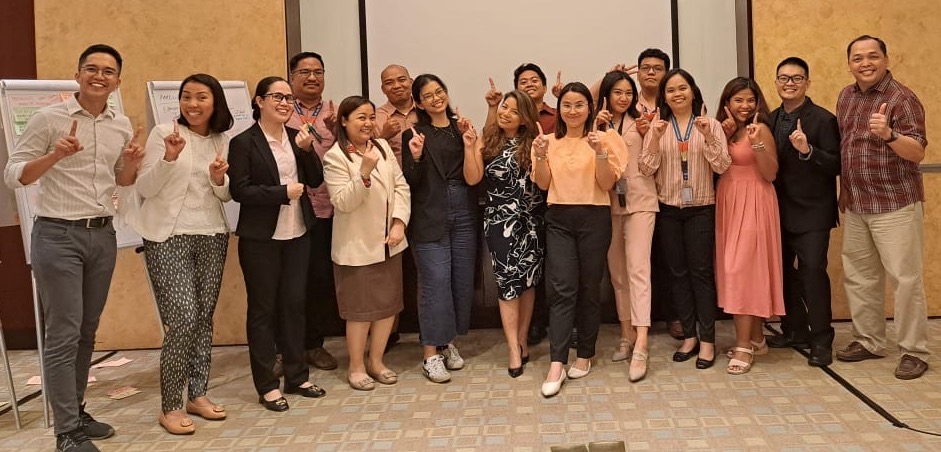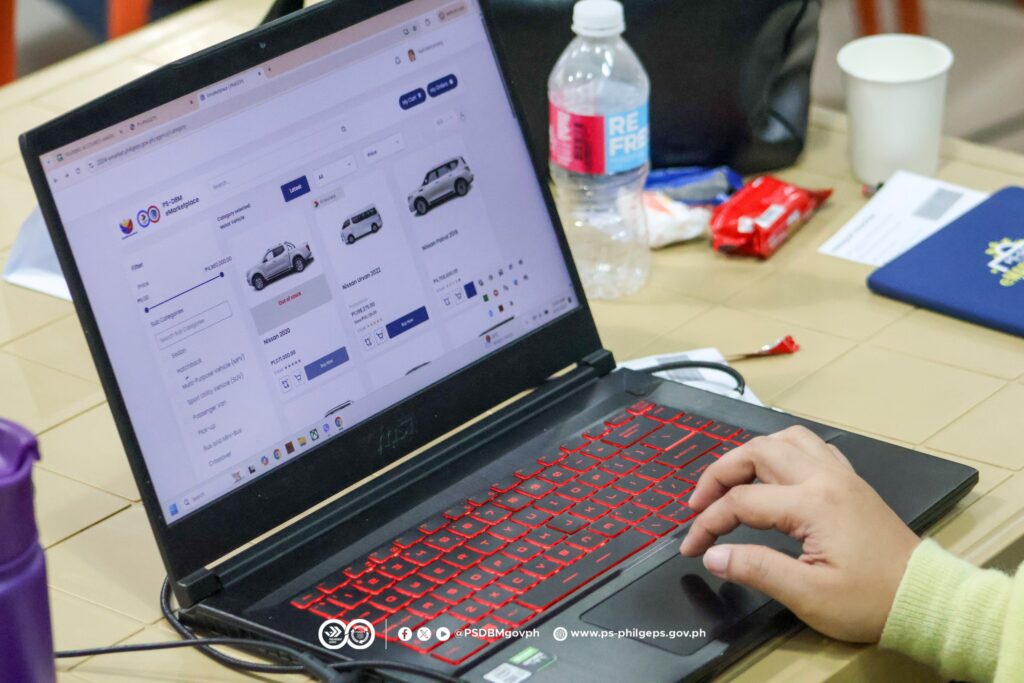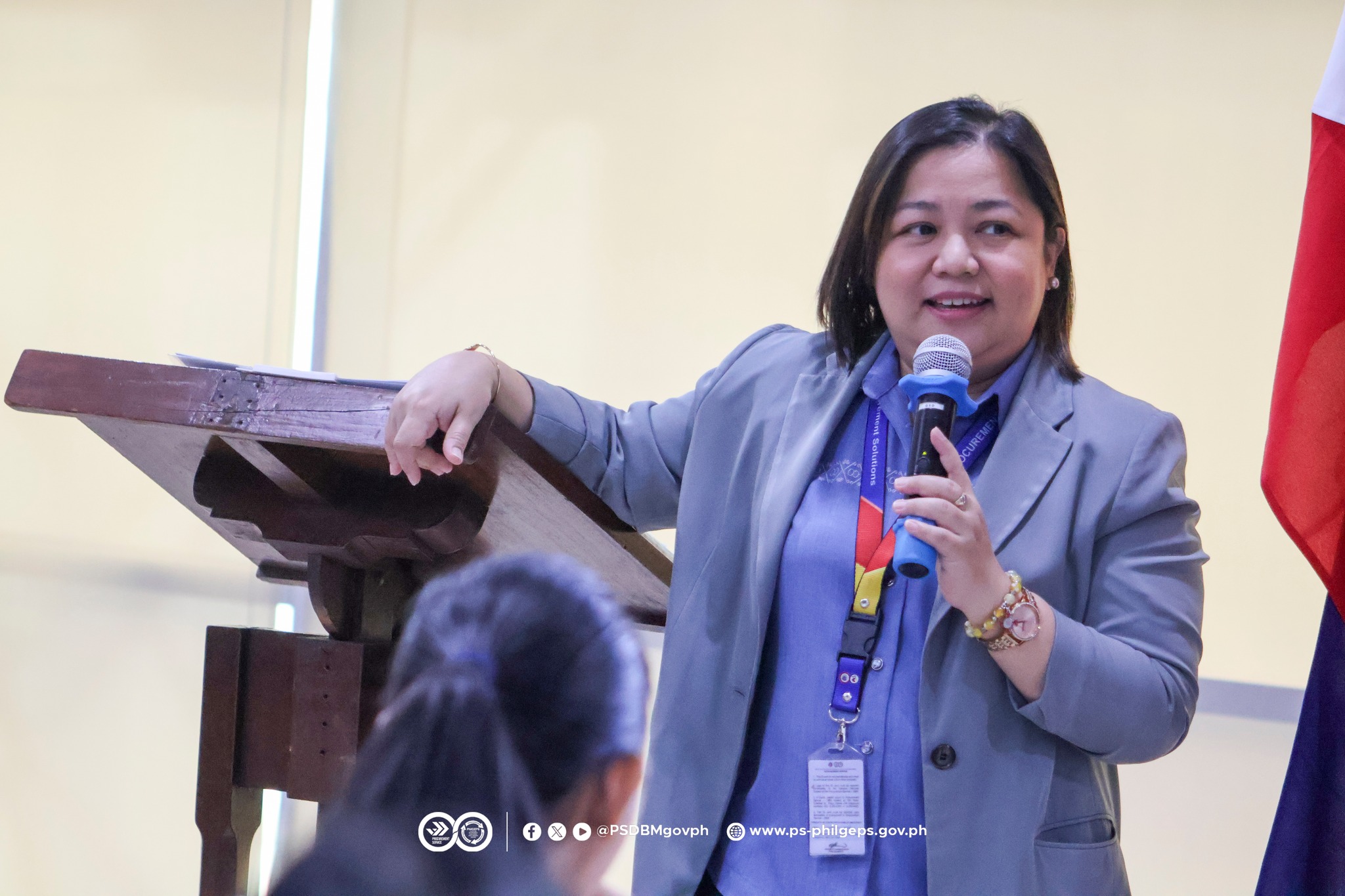How a spending scandal catalyzed an open contracting renaissance in the Philippines

For those accustomed to icy or hostile exchanges between public officials and outspoken members of the public, the rapport between transparency advocates and central procurement authorities in the Philippines can seem rather novel.
For instance, one morning in June, researchers, investigative journalists, and citizen observers gathered for a call with the central procurement agency, PS-DBM. The agency was working on upgrading its open data portal to give the public unparalleled insight into how government entities spend taxpayers’ money. This meeting had been arranged to help PS-DBM learn what data would be most useful for people to have and for what purposes.
“What price do different agencies pay for comparable items?” they wanted to know. How are popular government programs financed, like school meals or road upgrades along important logistics routes? Can new contracts be published immediately and in machine readable format so citizen monitors can review active projects in real-time?
This constructive cooperation is emblematic of an open contracting approach that’s been growing in the Philippines in recent years. Open contracting principles have been embedded in a major, multi-faceted reform that culminated in a new public procurement law. High-level commitments have also been made to modernize the e-procurement system, connect siloed government databases, and involve citizens in systematic public oversight, through international fora like the Open Government Partnership (OGP).
Momentum for these efforts has been spurred on by a collaboration led by the local civil society group WeSolve, the Open Contracting Partnership (OCP) and PS-DBM as supported by international experts like the UN Office of Drugs and Crime (UNODC). The central procurement agency has become an unexpected champion for transparent and accountable government after finding itself on the cusp of closure less than two years ago following an explosive corruption scandal.
PS-DBM’s road to redemption sets an example for other troubled institutions in the Philippines, showing how open contracting can not only save money, promote competition and improve government efficiency, but demonstrate to disillusioned citizens that change is possible through transparency, participation and accountability.
Overcoming the Covid controversy
It all started during the coronavirus pandemic. In 2021, PS-DBM was linked to controversies surrounding the purchase of medical supplies such as surgical masks and face shields. Several government and business executives were charged with graft, further investigations revealed other irregularities, and the fallout was so serious, PS-DBM was nearly dissolved.
Members of civil society, including the Citizens’ Budget Tracker supported by WeSolve Foundation and the Right to Know Right Now Coalition, raised red flags in pandemic procurement and questioned the capacities of the country’s top pandemic contractor, sending these reports to the Senate committee investigating the scandal.
This pushed PS-DBM’s new management to embark on a program of reforms in 2023 to restore trust in the institution. After the national elections, the agency appointed a new executive director Dennis Santiago, who knew PS-DBM had to rebuild trust with the public and prove its value while fixing its internal operations.
«When the position was offered to me, there was a hesitation because I knew it would be a gargantuan task,” said Santiago who had also come from civil society. “But our principals were saying, ‘Give it a try,’ and let’s see how we move forward and institute the necessary changes – perhaps, irreversible changes – along the way.”
Committed to better alliance-building, Santiago and his deputy, Director Genmaries Entredicho-Caong, accepted an invitation from WeSolve’s President Kenneth Isaiah Ibasco Abante to strategize how to improve the agency’s procurement, and together they applied to OCP’s Lift impact accelerator program to turn their ideas into reality.
“When PS-DBM’s leadership changed, we saw that then Executive Director Dennis Santiago and current Executive Director Genmaries Entredicho-Caong and PS-DBM’s committed career civil servants were serious about rebuilding the public trust the agency had lost. So we took the risk and engaged,” said Abante.
An inclusive approach to problem solving
With the help of OCP’s Lift impact accelerator program, PS-DBM and WeSolve carried out targeted research on how to improve the procurement of “common-use supplies and equipment” (CSEs) – a market directly under PS-DBM’s purview. This market, totalling PHP 1.6 billion (US$27 million) in 2023, includes office supplies like pens, paper, staples, computers, printers and toners needed by every Philippine government entity.
They examined the challenges in procuring CSEs and how to address them, with a focus on three performance areas: value for money, competitiveness, and public service delivery (or “client satisfaction” among government agencies). Together, the partners developed a robust theory of change, providing a clear roadmap for improvement.

The benefits of buying in bulk
WeSolve’s analysis of data from the e-procurement system showed the government had already been saving money by buying common use supplies centrally through PS-DBM instead of individually through each agency.
“We independently confirmed that PS-DBM saved taxpayers around 30% by buying in bulk, compared to buying in retail,” says WeSolve’s President Ken Abante. “That was prior to WeSolve’s engagement. Looking at one year’s worth of transactions in 2023 showed that savings were driven by bids that had two or more bidders.”
Further savings could be achieved by revising PS-DBM’s methods for setting product prices. This would also increase value for money and competition, their modelling showed.
The barriers to entry and efficiency
The partners also explored other issues that affected bidder participation. For instance, they found some potential suppliers were excluded from bidding if the financial requirements of a tender were too high, while others were deterred from bidding for contracts with agencies known for making late payments.
Finally, the late or non-submission of annual procurement plans affected CSE availability and how or when government agencies received the items they needed.
For a detailed explanation of the Lift reform methodology, see WeSolve/OCP’s paper and our previous story.
Elevating larger reforms
As Lift was ongoing, PS-DBM was also pursuing broader contracting reforms with international support. The collaboration through Lift helped break down siloes between the various stakeholders, bringing them together to identify the root causes of procurement failures, to craft effective solutions, and build a coalition of change to drive larger systemic transformations.
“Lift is powerful because it’s amplifying and augmenting initiatives that are already underway. It influenced the broader climate and opened up more avenues for civil society to participate in the transformation story of an agency that was in dire need of support,” says Abante.

Modernizing the procurement law
The main reform was an overhaul of the procurement law which hadn’t been updated in two decades.
The New Government Procurement Act (NGPA) set out to “modernize government procurement, foster transparency and fair competition, and improve procurement outcomes in alignment with national development goals.” Signed into law in July 2024, it also explicitly introduced open contracting principles to Philippine legislation for the first time, as well as sustainable public procurement principles – covering green, inclusive, and gender-responsive procurement programs.
In the drafting of the law’s Implementing Rules and Regulations (IRR), OCP and WeSolve recommended including new provisions, particularly on thematic areas such as transparency, data, participation, and accountability. Many of their recommendations were either included in the final IRR published in 2025 or in other reform mechanisms.
«As called for by our taxpayers, this allows our citizens to track government spending and ensures that resources are utilized efficiently and appropriately to improve public service delivery, true to the spirit of open and participatory governance,» said Amenah “Mina” F. Pangandaman, the Secretary of the Department of Budget and Management, which oversees PS-DBM, at the launch of the IRR.
Beneficial ownership transparency
As the new law’s regulations come into force over the next three years, procuring entities will be required to proactively disclose data needed to systematically track procurement procedures to promote transparency, accountability and curb graft. This includes publishing beneficial ownership data to better understand who really profits from spending on public contracts.
In March 2025, PS-DBM signed a data sharing agreement with the Securities and Exchange Commission that gives procurement authorities direct access to company information. As of July 2025, suppliers registered to participate in the e-procurement system (known as having “platinum membership”) are already required to disclose their real owners to authorities in order to bid on or win a contract, with those who fail to comply facing suspension.
The next step to enabling comprehensive procurement analysis will be to map the data from the e-procurement system, PhilGEPS, to the internationally recognized Open Contracting Data Standard (OCDS) format. OCP, WeSolve, PS-DBM and UNODC are working on this now as well as working with OpenOwnership and UNDP Philippines to improve the collection of beneficial ownership of the companies involved in public contracts.
New law gives PS-DBM teeth
The new procurement law also renewed the mandate of PS-DBM as an agency after its pandemic controversies. The NGPA designates the e-procurement platform PhilGEPS (run by PS-DBM) as the “single electronic procurement portal that shall serve as the primary source of information and channel in the conduct of all procurement activities of the government”. PS-DBM is also a member of the Government Procurement Policy Board, a top procurement policy-making body.
Adapting to the new rules
Aligning the e-procurement system to the requirements of the new law was another important part of the broader procurement reform. The current PhilGEPs 1.5 portal will be decommissioned to make way for an enhanced e-procurement system, the Modernized PhilGEPs (mPhilGEPS), and its procurement modules, including the e-marketplace, the e-bidding facility and the Virtual Store. PS-DBM has secured approval to retire PhilGEPS 1.5 on a staggered basis, so that no new procurement opportunities are expected to be posted on the old e-procurement portal after March, 2026.
Launched in December 2024, the e-marketplace improves efficiency by allowing government entities to buy certain products online, directly from qualified suppliers. For motor vehicles, the first item launched on the platform, 94 agencies have placed 258 orders as of 18 September, 2025. Vehicle purchases through the e-marketplace increased from 29 million pesos (US$500,000) worth of sales in the first quarter of 2025 to more than 250 million pesos (US$4.3 million) in quarter three. According to PS-DBM, the savings generated totalled 49 million pesos (US$850,000) when comparing the e-marketplace amount with the approved cost (declared by buying agencies on their Authority to Purchase Motor Vehicles or APMV), and 17 million pesos (US$290,000) when compared to the open market. These results will be subject to further independent verification by civil society partners.
After PS-DBM launched a supplier outreach campaign, more than 20 companies have applied to join the e-markplace to sell vehicles and other forthcoming product categories such as airline tickets, software, and logistics services.

Another feature, the e-bidding facility, digitizes the entire procurement process, including bid submissions, evaluation, and contract management. It is set to fully replace the manual public procurement process once all procuring entities have migrated to the modernized PhilGEPS system. Currently, 69 procuring entities are in the process of transitioning to the e-bidding facility, of which only three are using it to conduct the bid submission process online (including PS-DBM).
“This migration and system integration of the key agencies are important anti-corruption reforms which will allow for fuller capture of bid competition data, so that monitors can more automatically identify red flags in procurement. Monitors will no longer need to manually encode price data of competing bidders. The more agencies using the e-bidding facility, the harder it will be for bids to be rigged,» said PhilGEPS Director Maria Teresita “Tess” M. Semana.
Progress on common use supplies
PS-DBM has strengthened its internal policies (Citizens’ Charter, Item 17) requiring payments to suppliers to be made within 15-30 days. The Charter is an important accountability mechanism, as it outlines the processing time and person responsible for the agency’s services, as well as its complaints process. Now any delays in payments can be more effectively challenged and rectified.
To help forecast what items to stock, each agency is required to share their annual procurement plan for common use supplies with PS-DBM. However, compliance was low and many agencies failed to submit accurate plans in good time. So in the first half of 2025, PS-DBM trained over 1,000 agencies across the country on how to prepare realistic annual procurement plans and how to use PS-DBM’s virtual store. In the six months following the training, sales through the virtual store saw a 106 million pesos (US$1.8 million) increase over the same period last year, equivalent to a 25% year-on-year growth, according to PS-DBM.
Other recommendations from Lift are in the process of being implemented. Informed by the Lift team’s findings, WeSolve and OCP helped develop better price setting guidelines which are being reviewed by PS-DBM’s management and are expected to be approved and implemented in late 2025.
Taking up the challenge
The collaboration emerging from Lift also catalyzed PS-DBM’s engagement in other programs that incentivize reform. Through the Open Government Challenge, PS-DBM committed to be a “stalwart advocate of a corrupt-free environment on public procurement, through strengthening open contracting and public monitoring.” With OCP and WeSolve’s support, the agency is working towards achieving six key milestones before the Challenge ends in March 2028, incorporating many of WeSolve/OCP’s recommendations, such as developing an open data platform to facilitate public monitoring procurement.
“Through this challenge we are standing firm in our resolve to turn PS-DBM into what it should be – a lead advocate of open government, a reliable steward of public resources, and a model for ethical, innovative and responsible public service.”
“Through this challenge we are standing firm in our resolve to turn PS-DBM into what it should be – a lead advocate of open government, a reliable steward of public resources, and a model for ethical, innovative and responsible public service,” said PS-DBM’s Genmaries Entredicho-Caong, who is now executive director of the agency, at a recent webinar.
Milestones of the Open Government Challenge Commitment
WeSolve’s Ken Abante emphasizes the importance of the research agenda component of the Open Government Challenge commitment.
“Having independent monitoring by a community of independent researchers, investigative journalists and observers will be critical to assess whether the new procurement law is succeeding in its objectives and how it can be better implemented.”

What’s next
Now, as a new national scandal simmers over gross mispending of flood management funds, outraged Filipinos have turned to social media to denounce the luxurious lifestyles of flood control contractors and their families financed by what’s believed to be stolen wealth.
Just as they did during the pandemic, the WeSolve team is working within a broader coalition for change with the People’s Budget Coalition, on the one hand coordinating with other members of civil society to hold power to account, while on the other, using their research skills and expertise to support government reformers to fix problems at a systemic level.
At the time of writing this story, WeSolve was immersed in a grassroots campaign with budget monitors in the People’s Budget Coalition to examine the financial failures behind the flood control scandal. Within days, more than 130 institutions and another 190 individuals had signed their open letter calling for systemic reform. Signatories came from leaders of the church, scientific community, academe, civil society, business, military and uniformed personnel, labor unions and federations, typhoon survivors, disaster response volunteers, commuters, and youth groups.
They’ve found inspiration in other open contracting projects from India and Taiwan that improved strategic spending decisions to protect against floods.
In the Philippines, there’s a clear appetite for change. “We demand that this corrupt system be replaced with a system of transparency, accountability, and people’s participation that makes it harder to be bad and easier to be good,” the civil society members say in their statement.
“In the wake of the flood control scandal, many people have lost trust in the integrity of the country’s budget and procurement systems. But the lesson we can learn from PS-DBM’s story is that we can only begin to rebuild this broken trust when leaders are brave enough to be open, to listen, and to collaborate with civil society, academe, journalists, and business.”
Meanwhile, some of the companies at the centre of the flood control investigations have had their PhilGEPs membership cancelled, disqualifying them to participate further in government projects.
PS-DBM remains conscious of its mandate and its commitment to combat corruption, explains the agency’s Executive Director Genmaries Entredicho-Caong.
“We feel and understand the madness amongst us Filipinos, with all these revelations in the flood control investigations,” says Entredicho-Caong. “Know that we heed your call, and we are doing everything within our resources and capacities to make more procurement information open and accessible to the public, as early as possible.”
“We are just as curious as our civil society partners on how beneficial ownership information can assist in detecting conflict of interest in government dealings. As soon as we secure the necessary approvals and confirmation, we are hopeful to be able to publish the beneficial ownership registry on government merchant-corporations soon.”
In October, members of WeSolve, PS-DBM, OCP and friends will reunite in Spain for the Open Government Partnership Summit where the initiative was recognized with the Regional Open Gov Challenge Award for its plan » Improve Data Availability, Interoperability, and Public Participation in Procurement.» In just over two years, their collaboration has proved the value of a government service that many assumed was beyond saving, and its new management are among those leading the charge globally for transformational anti-corruption measures. There is still much work to be done but it’s an appropriate moment to mark the progress they’ve made.
OCP’s impact accelerator program Lift
Lift is one of our core programs that supports teams of bold procurement reformers from public administration and civil society to deliver transformational change through open contracting.
Teams are selected through a competitive process and receive 18 months of change management and open contracting assistance to use public procurement to improve effective governance and support more equitable and green communities.